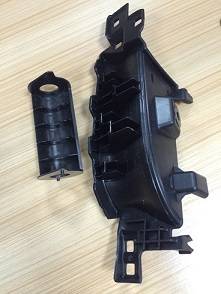Molding the Future: Demystifying Injection Molds
Injection molds play a vital role in the manufacturing industry, acting as the powerhouse behind the mass production of various plastic products we use in our daily lives. These molds serve as intricate tools that shape molten material into specific forms with precision and efficiency. Behind the scenes of every plastic component lies the handiwork of an injection molder, a skilled professional adept at operating these complex molds to bring designs to life.
The process of injection molding involves the injection molder loading raw materials into the mold cavity, applying heat and pressure to solidify the material, and then carefully extracting the finished product. With the ability to create intricate designs and unique shapes, injection molds are widely utilized across industries such as automotive, electronics, and consumer goods. The demand for skilled injection molder s continues to rise as manufacturers seek to streamline production processes and meet the growing needs of consumers worldwide.
Types of Injection Molding Processes
In the world of injection molding, various processes are utilized to create a wide range of products. One common method is known as thermoplastic injection molding. This process involves heating thermoplastic materials until they become molten and then injecting them into a mold cavity to take the desired shape once cooled.
Another important technique is precision molding, which focuses on producing highly accurate and intricate components. Precision injection molding involves using advanced machinery and tools to ensure the final products meet strict dimensional and quality specifications.
Furthermore, the multi-shot injection molding process is gaining popularity due to its ability to create complex parts with different materials or colors in a single mold. This process allows for enhanced design flexibility and cost-effectiveness in producing parts with varying characteristics.
Key Components of Injection Molds
The core and cavity are essential parts of injection molds. The core creates the internal shape of the final product, while the cavity defines the external shape. Both components must fit together precisely to produce objects accurately.
Another vital component is the ejector pins, which help to push the finished product out of the mold after the plastic has solidified. These pins need to be positioned carefully to avoid damaging the product during ejection.
The runner system is responsible for guiding the molten plastic into the mold cavity. It consists of channels that allow the even distribution of the material within the mold. Proper design of the runner system is crucial for achieving consistent and high-quality results.
Common Challenges in Injection Molding

Injection molding involves intricate processes that can pose various challenges to injection molders. One common challenge is ensuring proper material selection for the intended product. The choice of material affects the final product's quality, durability, and performance. Injection molders must carefully evaluate factors such as material properties, cost, and environmental impact to make informed decisions.
Another challenge faced by injection molders is achieving precise and consistent mold designs. Minor discrepancies in mold geometry can lead to defects like warping, shrinkage, or part inaccuracies. Injection molders often employ advanced design software and meticulous calibration techniques to optimize mold designs and ensure uniformity in the final products.
Quality control is a crucial challenge in injection molding. Maintaining consistent product quality across large production runs requires vigilance and attention to detail. Injection molders must implement robust inspection protocols, monitor production parameters closely, and address any deviations promptly to uphold quality standards and meet customer expectations.